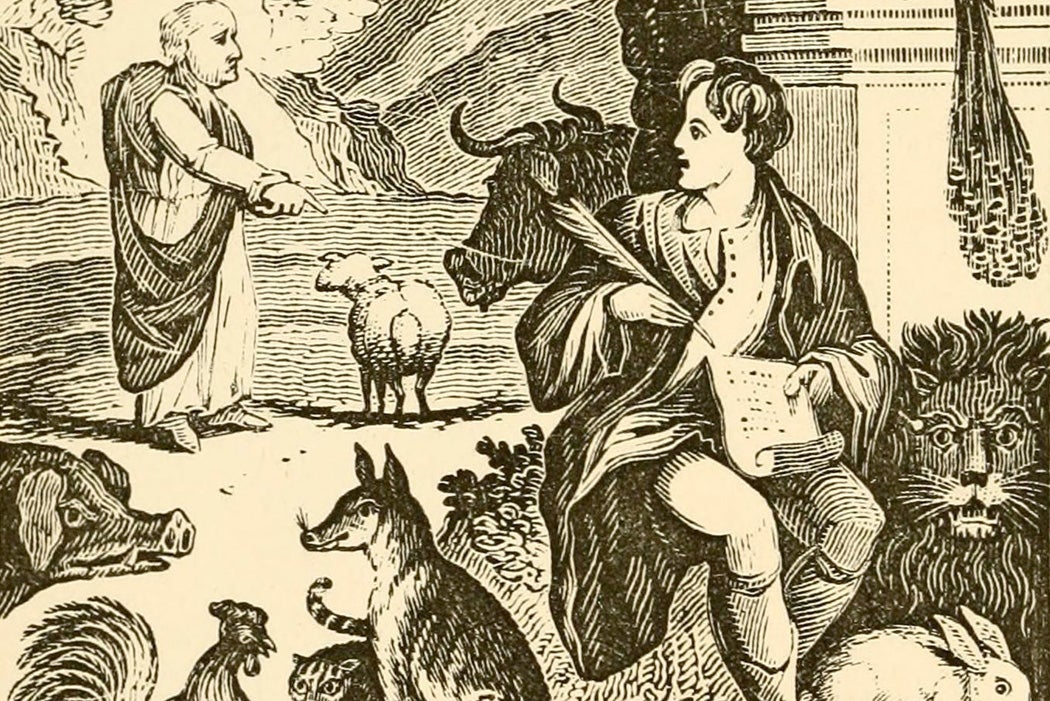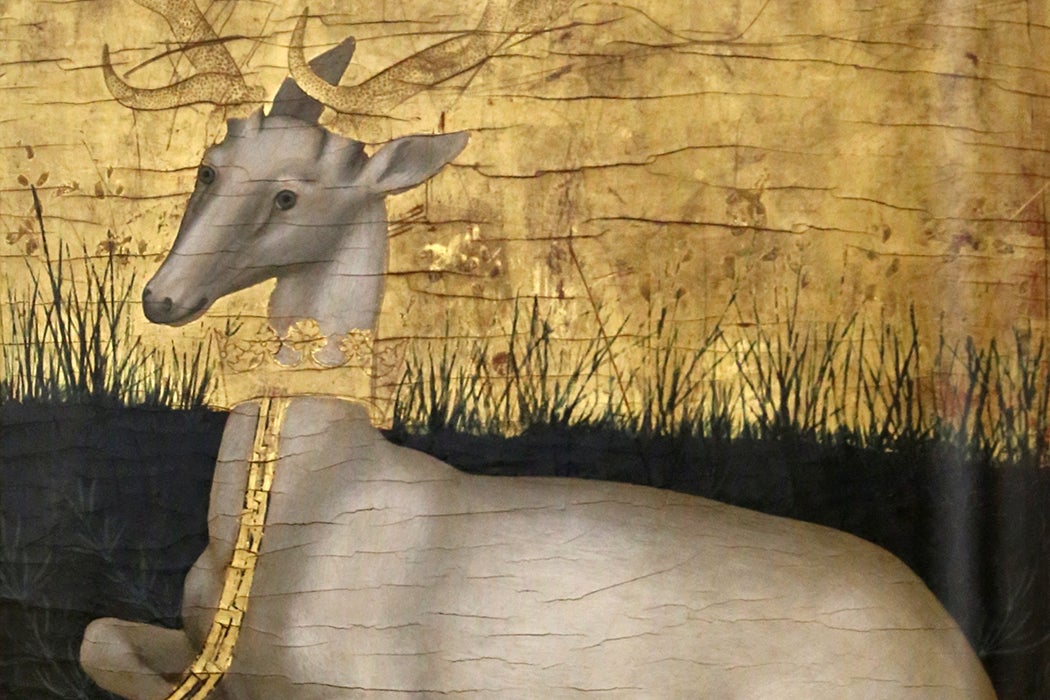Weasels, deer, nightingales—these are some of the most consequential characters in the Lais, a collection of narrative poems written in the twelfth century by Marie de France. In her tales, animals are often responsible for teaching humans how best to live. This conceit fits within the broader literary tradition of fables, which were immensely popular during the Middle Ages. Marie, who translated Aesop into Anglo-Norman French, would have been intimately familiar with the genre. According to the literature professor Logan E. Whalen—who has called Marie “France’s first woman of letters”—her depiction of animals particularly stands out in the lai, “Guigemar.”
The eponymous protagonist, Guigemar, seems to be a perfect knight: He is brave, generous, and wise. Despite this, he holds a fatal flaw, and Marie points it out early on. “Nature had done him such a grievous wrong that he never displayed the slightest interest in love.” Although women “frequently made advances to him,” he was absolutely “indifferent to them.”

The romance literature of the late Middle Ages dictated that knights participate in the “game of courtly love.” Guigemar could be no exception. During an early hunt one morning, he spots a hind (female deer) in a large bush. “The beast,” Marie writes, “was completely white with the antlers of a stag on its head.” In other words, this white hind was a kind of androgynous creature. Guigemar, either unaware of or impervious to the deer’s special status, shoots and mortally wounds it. His arrow, however, rebounds and hits his own thigh, before lodging into his horse’s side.
“If up to this point … the hero has demonstrated no emotional interest whatsoever in love,” Whalen observes, “he is now also incapable of showing it physically, a condition made clear by the well-known medieval euphemism of a wound in the thigh.” The Fisher King, an enigmatic figure from the Arthurian legend, famously had a pierced thigh. For centuries, scholars and lay readers interpreted the location of this wound to be in the groin, since the Fisher King did not have any children and could not stand up. Marie’s audience would have surely recognized the true meaning of the word “thigh” in Guigemar’s story.
Weekly Newsletter
In any case, the true and full lesson comes when the hind—“the only character in the Lais who possesses the capacity for human speech when in animal form”—addresses Guigemar.
“Alas! I am mortally wounded. Vassal, you who have wounded me, let this be your fate. May you never find a cure, nor may any herb, root, doctor, or potion ever heal the wound in your thigh until you are cured by a woman who will suffer for your love more pain and anguish than any other woman has ever known, and you will suffer likewise for her, so much so that all those who are in love, who have known love or are yet to experience it, will marvel at it.”
Thus, to heal both physically and emotionally, Guigemar is condemned to either learn how to love, or remain compromised for life.







